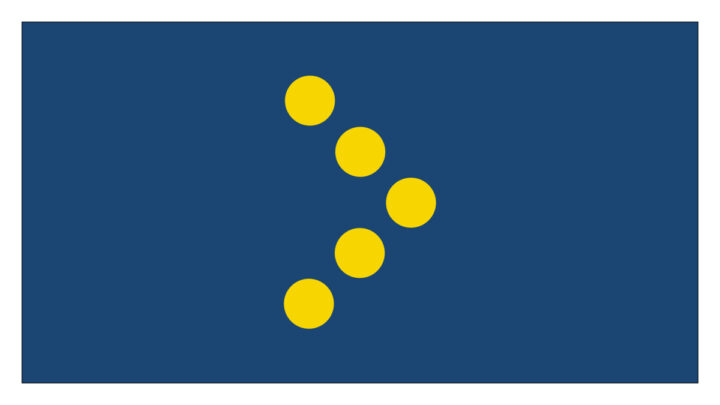13 September, 2022
Time to Downgrade the Eastern Partnership and Refocus on Enlargement
SCEEUS Guest Platform for Eastern Europe Policy No. 4
The geopolitical relevance of the Eastern Partnership (EaP) was significant when the initiative was launched in 2009. In 2022, the stormwaves of history that have rushed through the region have brushed aside the EaP to a marginal position. Rather than trying to revive the initiative, the EU should reorient its efforts in the region to enlargement policy with a focus on Ukraine and Moldova.
The EaP as a Geopolitical Failure…
When launched in the aftermath of the Russo-Georgian war of 2008, the Eastern Partnership was the EU’s half-way response to Russia’s growing ambition to restore its sphere of influence in the post-Soviet space.[1] Instead of setting a clear strategic goal to embrace those Eastern neighbours that expressed strong European aspirations, the EU designed a policy that took significant steps towards their integration but remained ambiguous on the issue of potential membership. A wish not to provoke Russia through too strong EU engagement in the region was an important motivation behind the cautious approach. Many old member states were also concerned about the EU’s ability to absorb new members.
The strategic ambiguity of EaP was most probably read in the Kremlin as a signal that the EU was de facto acknowledging Russia’s privileged role in the region. Russia’s invasion of Ukraine exposed the failure of the EU’s approach to security in its Eastern neighbourhood and forced it to change course. In 2022, we have finally seen the EU taking a clear position supporting Ukraine’s right to choose its orientation and countering Russia’s efforts to impose its sphere of influence by force. The decision taken by EU heads of states in June 2022 to accept Ukraine and Moldova, and potentially Georgia, as candidate countries was a choice for strategic clarity, expressing the EU’s commitment to defend the core principles of European security when they are under attack.
At the same time, this decision placed EU relations with Ukraine and Moldova in the policy framework of enlargement, which has a host of pragmatic and bureaucratic implications. Ukraine, which was never very fond of the EaP and even less the European Neighbourhood Policy, has expressed strong determination to advance towards membership as fast as possible, in spite of the ongoing war.
The new geopolitical context inevitably downgrades the purpose of EaP and shrinks its agenda. EaP maintains limited relevance for regional cooperation and cross-regional efforts in areas such as connectivity, climate and energy. Furthermore, it remains a useful framework for EU relations with countries that are not included in the enlargement policy but wish to develop cooperation with the EU, notably Armenia. Thus, the EaP still has some geopolitical relevance, as it offers possibilities for some of the partner countries to balance the strong role of Russia and growing role of China. It also provides a platform for engaging the democratic opposition and civil society of Belarus, while the illegitimate regime of Alyaksandr Lukashenka has suspended Belarus’ official participation in the initiative.
… That Turned into a Stepping Stone to Enlargement
The slide of EaP into the margins of the EU’s Eastern policies certainly doesn’t mean that its activities thus far would have been useless. The EaP failed to manage the geopolitical challenge posed by increasingly aggressive Russia, but it played an important role in helping to prepare Ukraine and Moldova for candidate country status and forthcoming accession negotiations. The EU side did not mean it to be a stepping stone to enlargement, but this is how the EaP turned out nonetheless.
The most important element of EaP – Association Agreements including Deep and Comprehensive Free Trade Agreements (AA/DCFTA) concluded with Ukraine, Moldova and Georgia – established a truly ambitious new contractual model for EU relations with neighbours. What tends to be forgotten is that EU-Ukraine negotiations on a “new enhanced agreement” actually started before the creation of EaP, in March 2007. In 2008, the sides agreed on the title of “association agreement” which had faced resistance in the EU as being too ambitious. Ukraine always wished to see the new agreement as a step towards full membership in the Union. The launch of EaP and extension of the AA/DCFTA model, initially created for Ukraine, to potentially cover all Eastern (and even Southern) neighbours dimmed such hopes.
Now that Ukraine and Moldova have achieved candidate country status, the work they have done on implementing AA/DCFTAs makes a major difference. They are more advanced in meeting the accession criteria than the Western Balkans states, which reflects the higher level of ambition of the AA/DCFTAs in comparison to the Stabilisation and Association Agreements that the EU has concluded with the latter. The chapters of AA/DCFTAs cover virtually all chapters of the accession negotiations. Since the agreements with Ukraine, Moldova and Georgia were signed in 2014, the three countries’ progress in implementation has been regularly evaluated by both the European Commission and independent experts. Especially the economic chapters of the accession process have been extensively covered in the implementation of AA/DCFTAs.[2]
Russia’s invasion did not stop the practical integration process, quite the contrary. Soon after the invasion, the electricity grids of Ukraine and Moldova were synchronized with the Continental European Grid, marking an important step in the countries’ integration to EU energy system. The EU has suspended all quotas and tariffs on Ukrainian exports to the Union in an effort to support the Ukrainian economy. Furthermore, Ukraine has joined the EU’s Digital Europe Programme, which enables it to apply for funding for projects in the field of digital development, and is about to join the common transit system, which will support EU-Ukraine trade.[3]
The Triple Task of Ukraine’s Victory, Reconstruction and Enlargement
Looking ahead, Ukraine aims to launch accession negotiations in 2023. The war might not be over by then, but Ukraine will also be moving ahead with post-war reconstruction. In all likelihood, the EU’s relationship with Ukraine will have to simultaneously tackle three major issues: military support to help Ukraine restore its territorial integrity and defend itself, rebuilding the country from the ruins of war, and conducting accession negotiations. This is an unprecedented set of tasks for both sides, the success of which is vital for the future of Europe. In the foreseeable future, Ukraine will remain on top of the EU’s new geopolitical agenda.
The short-term priority must be a further increase of military aid, not least because Ukraine’s ability to push Russian forces out of its territory will be vital for reconstruction and economic investment. Yet the three major goals – winning the war, reconstruction and EU accession - should be pursued hand-in-hand, in a mutually reinforcing manner. For example, anti-corruption reforms and energy transition are both areas that are essential for achieving each of the three goals: both are important accession requirements, key issues in the reconstruction process, and essential elements of security and resilience.
The costs of achieving sustainable peace in Europe are enormous. During the first six months of war, the EU provided €2.5 billion in military assistance to Ukraine under the European Peace Facility (on top of $10.6 billion provided by the US). When it comes to reconstruction, Ukraine has requested $750 billion of international support in the coming years; the European Commission has suggested that it might finance $500 billion. By way of comparison, the Economic and Investment Plan for the six EaP countries proposed by the Commission in 2021 foresaw up to €2.3 billion of funding for investment in the next 5 years.
Fighting corruption and supporting energy transition have been among key priorities of the EaP. Furthermore, the EaP has increasingly invested in improving connectivity of the partner countries, especially improvement of infrastructure.[4] The initiative can continue to play a role in supporting Ukraine’s and other Eastern partners’ development in these fields. After all, policy labels are less important than what gets done on the ground. However, it is evident that the EaP is not a sufficient tool for supporting Ukraine.
Furthermore, politically it is crucial for Ukraine and Moldova that their relationship with the EU has taken a historical step from EaP to enlargement policy, with full EU membership as a strategic goal fostering hope and motivation to move ahead. The Eastern Partnership was an interim framework for EU-Ukraine and EU-Moldova relations for approximately 13 years, with important strategic flaws but also notable practical achievements. As of today, the EU should avoid prioritizing the EaP because of bureaucratic or political inertia. Countries that have been the strongest supporters of EaP – Sweden, Poland, the Czech Republic and others – should rather refocus on enlargement in their efforts to shape EU policy towards the region.
Policy recommendations:
- In the foreseeable future, the EU’s policies in the Eastern neighbourhood should prioritise three major, interrelated goals in Ukraine: military support to help Ukraine restore its territorial integrity, reconstruction, and the accession process.
- The Eastern Partnership should be downgraded and focused on regional cooperation and countries that are not included in the enlargement policy but wish to develop their relations with the EU, most notably Armenia.
- Those EU member states that have been the strongest supporters of EaP should refocus on enlargement in their efforts to shape EU policy towards the region.
References:
[1] Ukraine’s EU Membership and the Geostrategy of Democratic Self-Preservation - Carnegie Europe - Carnegie Endowment for International Peace
[2] Opinion on Ukraine’s application for membership of the European Union – CEPS
[3] Solidarity with Ukraine: EU-Ukraine Association Council takes place, with new agreements further strengthening cooperation between the EU and Ukraine (europa.eu)
[4] Connectivity of the EU’s Eastern Partnership region: contestation between liberal and illiberal approaches: Journal of Contemporary European Studies: Vol 0, No 0 (tandfonline.com)




The Security Dilemma of the Eastward EU Enlargement